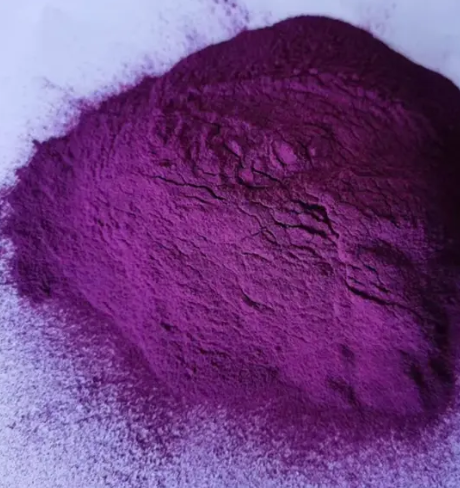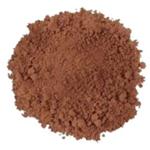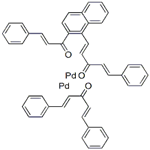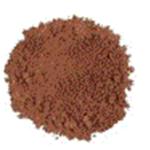Tris(dibenzylideneacetone)dipalladium: uses and Health effect
May 9,2024
Introduction
Tris(dibenzylideneacetone)dipalladium is a dark-purple solid. It is insoluble in water. Soluble in chlorinated solvents, benzene, and THF. Tris(dibenzylideneacetone)dipalladium is a homogeneous organopalladium catalyst for various coupling reactions. It is a versatile precursor material and a soluble Pd source for synthesizing other organometallic palladium complexes, palladium compounds, and nanomaterials.

Uses
Tris(dibenzylideneacetone)dipalladium is the most widely used Pd0 precursor complex in synthesis and catalysis, particularly as a catalyst for various coupling reactions. It is used as a catalyst precursor for palladium-catalyzed carbon-nitrogen bond formation and conversion of aryl chlorides, triflates, and nonaflates to nitroaromatics. It is used as a catalyst for the synthesis of epoxides and alpha-arylation of ketones, in combination with BINAP for the asymmetric heck arylation of olefins, site-selective benzylic sp3 palladium-catalyzed direct arylation and homoallylic diamination of terminal olefins. It is also used for palladium-catalyzed one-pot synthesis of tricyclic indolines in the Suzuki-Miyaura coupling of 2-pyridyl nucleophiles and cross-coupling of aryl halides with aryl boronic acids.
Reactant involved in:
• Synthesis of nanosized palladium phosphides upon interaction with white phosphorous
• Preparation of palladium triphenylphosphine carbonyl cluster complexes
• Precursor for synthesis of functionalized multiwalled carbon nanotube-palladium complexes used as catalysts for Heck coupling reactions
• Selective carbon-sulfur bond formation via the addition of S-S and S-H bonds to alkynes
Catalyst for:
• Suzuki cross-coupling reactions
• PCN- and PCS-pincer palladium complex catalyzed tandem allylation
• C-C and C-N bond formation, especially the Suzuki and Heck coupling reaction.
Health effect
Accidental ingestion of the material may be harmful; animal experiments indicate that ingestion of less than 150 grams may be fatal or may produce serious damage to the health of the individual. Colloidal palladium is reported to increase body temperature, produce discoloration and tissue death at the site of injection, decrease body weight, and cause some destruction of blood cells. The platinoids and their compounds are generally poorly absorbed from the gastrointestinal tract, and absorption by other parenteral routes, excluding the intravenous (i.v.) route, is also negligible. Absorption by inhalation is generally higher. Following inhalation, most of the dose is retained in the lungs and upper respiratory tract after i.v. In injection, most platinoids are distributed in the soft tissues. Excretion is mainly in the urine. (Orally administered platinoids are excreted primarily in the feces.).
Although the material is not thought to be an irritant, direct contact with the eye may cause transient discomfort characterized by tearing or conjunctival redness (as with windburn). Slight abrasive damage may also result.
Skin contact is not thought to produce harmful health effects (as classified using animal models). Systemic harm, however, has been identified following exposure of animals by at least one other route, and the material may still produce health damage following entry through wounds, lesions, or abrasions. Open cuts and abraded or irritated skin should not be exposed to this material. Entry into the bloodstream, through, for example, cuts, abrasions, or lesions, may produce systemic injury with harmful effects. Examine the skin prior to the use of the material and ensure that any external damage is suitably protected.
The material is not thought to produce either adverse health effects or irritation of the respiratory tract following inhalation (as classified using animal models). Nevertheless, adverse effects have been produced following exposure of animals by at least one other route, and good hygiene practice requires that exposure be kept to a minimum and that suitable control measures e used in an occupational setting. Persons with impaired respiratory function, airway diseases, and conditions such as emphysema or chronic bronchitis may incur further disability if excessive concentrations of particulate are inhaled.
- Related articles
- Related Qustion
- Tris(dibenzylideneacetone)dipalladium: activities and application in complex formation Aug 4, 2023
Tris(dibenzylideneacetone)dipalladium shows promise in apoptosis induction, tumor inhibition, metal toxicity reduction, and antimicrobial activity.
- What is Tris(dibenzylideneacetone)dipalladium? Jun 3, 2021
Tris(dibenzylideneacetone) dipalladium (Tris DBA) is used as catalyst for a wide variety of Pd catalyzed reactions including Suzuki coupling, Heck coupling, Negishi coupling, Carroll reaarangement etc.
N, N-Dimethylformamide dimethyl acetal, also known as DMF-DMA or 1,1-dimethoxytrimethylamine, belongs to the class of organic compounds known as carboxylic acid amide acetals.....
May 9,2024Organic reagentsTrolox is a hydrophilic analogue of vitamin E. Trolox has been used as a standard antioxidant in antioxidant capacity assays.....
May 9,2024APITris(dibenzylideneacetone)dipalladium
51364-51-3You may like
- polypropylene vs polycarbonate
Mar 18, 2024
- What is sodium chlorite used for?
Mar 16, 2024
- What is chlorine dioxide used for?
Mar 16, 2024
Tris(dibenzylideneacetone)dipalladium manufacturers
- Tris(dibenzylideneacetone)dipalladium
-

- $12.00 / 1g
- 2024-05-17
- CAS:51364-51-3
- Min. Order: 1g
- Purity: 99%
- Supply Ability: 500
- Tris(dibenzylideneacetone)dipalladium
-

- $0.00 / 1KG
- 2024-01-23
- CAS:51364-51-3
- Min. Order: 1KG
- Purity: 98.00%
- Supply Ability: 100KG /month
- Tris(dibenzylideneacetone)dipalladium
-

- $100.00 / 1KG
- 2023-12-24
- CAS:51364-51-3
- Min. Order: 1KG
- Purity: 99%
- Supply Ability: g-kg-tons, free sample is available




